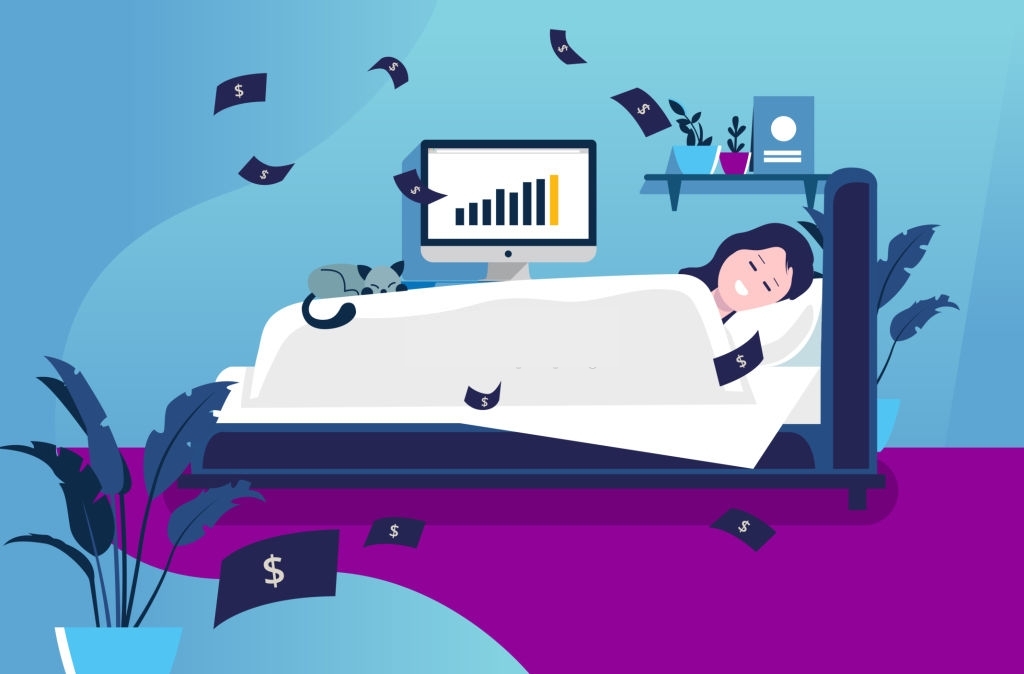There’s something undeniably appealing about the idea of earning money while doing nothing. It sounds like a fantasy—until you realize that’s exactly what smart investing can do. While you’re out enjoying dinner with friends, asleep in bed, or on a weekend hike, your money can be quietly working for you in the background. This concept, often referred to as passive income or passive yield, is not just for the ultra-wealthy or financial gurus. It’s a practical goal for anyone looking to grow their wealth without constantly trading time for money.
Whether you’re just starting your financial journey or looking for ways to make your savings more productive, passive income strategies can play a crucial role in achieving long-term financial independence. But what does it really mean, and how can you start?
La differenza tra reddito attivo e passivo
Active income is what most of us are familiar with—it’s the money you earn in exchange for your time and labor. This includes your salary, freelance gigs, or any job that stops paying the moment you stop working.
Passive income, on the other hand, is money earned with minimal ongoing effort. It often requires upfront investment, whether that’s in terms of money, time, or skills. The key idea is that once it’s set up, it continues to generate income without requiring your active participation day after day.
Alcune delle più comuni fonti di reddito passivo sono i dividendi delle azioni, gli interessi delle obbligazioni o dei conti di risparmio, i redditi da locazione degli immobili e i rendimenti dei prestiti peer-to-peer o degli ETF generatori di reddito.
Iniziare in piccolo, crescere nel tempo
You don’t need tens of thousands of euros to get started. In fact, many investment platforms allow you to begin with just € 50 or € 100. For example, Trade Republic’s savings plans or Fineco’s investment solutions offer simple, low-cost ways to invest in dividend-paying ETFs or bond funds.
Let’s take dividend stocks as a starting point. If you invest € 1,000 in a diversified ETF with a 3% annual dividend yield, you’ll earn € 30 per year. That may not sound like much, but if you keep adding to your investment and reinvest those dividends, the compounding effect kicks in. Over time, your income grows not just from your contributions, but from the earnings your capital generates. Add time and discipline, and you’ll be amazed at the outcome.
According to historical data, the S&P 500 has delivered an average annual return of around 10%—including both capital gains and dividends. Even a more conservative income strategy can aim for 3–5% annually in a balanced portfolio, depending on risk tolerance and asset mix.
Attività da reddito da considerare
Il rendimento passivo si presenta in molte forme e la scelta della strategia giusta dipende dai vostri obiettivi, dalla vostra propensione al rischio e dal vostro orizzonte temporale. Alcune opzioni adatte ai principianti sono:
- ETF sui dividendi: Fondi che investono in società note per il pagamento di dividendi regolari. Offrono diversificazione e pagamenti regolari senza la necessità di effettuare ricerche sui singoli titoli.
- Fondi obbligazionari: Che siano governative o societarie, le obbligazioni pagano un interesse fisso e sono spesso considerate più stabili delle azioni. I fondi rendono più facile investire in modo ampio, anche con piccole somme.
- Trust di investimento immobiliare (REIT): These companies own income-generating real estate and typically pay out most of their profits as dividends. They’re a popular way to earn from property without owning it directly.
- Depositi di risparmio o a termine ad alto rendimento: Particolarmente rilevanti in un contesto di tassi d'interesse in crescita, alcune banche e piattaforme fintech offrono oggi rendimenti competitivi con un rischio relativamente basso.
Sono tutti strumenti che possono iniziare a generare reddito con una barriera d'ingresso relativamente bassa, ideale per gli investitori alle prime armi o per chi sta costruendo un portafoglio diversificato.
Costruire una mentalità di accumulo, non di sostituzione immediata
One common misunderstanding about passive income is expecting it to immediately replace your paycheck. That’s usually not realistic—at least not right away. Instead, think of it as layering streams of income that grow over time.
At first, the gains may feel modest. But as your investments compound, your income snowballs. In 5–10 years, that € 100 monthly investment could become a significant cash flow. And eventually, it could provide the freedom to reduce your working hours, take a sabbatical, or even retire earlier than expected.
In Italia e in Europa, dove le pensioni tradizionali sono sempre più sotto pressione, la creazione di un proprio flusso di reddito passivo può rappresentare una preziosa rete di sicurezza per il futuro.
Trasformare il tempo in ricchezza
You work hard for your money—but it should also be working for you. By incorporating passive yield strategies into your financial routine, you’re taking the first step toward breaking the time-for-money cycle.
No, it’s not instant. And yes, it requires patience, consistency, and a bit of education. But the beauty lies in the quiet progress. Every euro you invest becomes a little employee, generating income day and night, regardless of whether you’re logged in, clocked in, or checked out.
Start small. Stay consistent. Let your money earn its place at the table—while you sleep.

